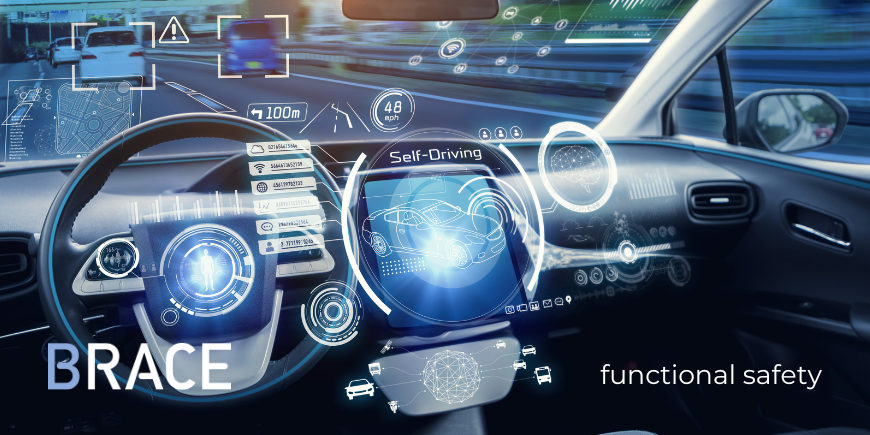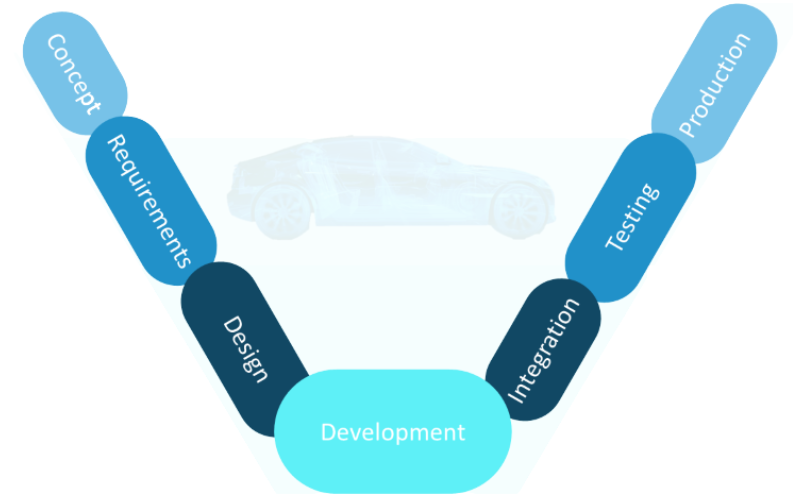
Back to Basics - Product Safety and Functional Safety
Autonomous vehicles, electrification, connected cars, ride sharing are some of the terms that we have been increasingly exposed to in the automotive space. A space once wholly occupied by the car manufacturing heavyweights and its dedicated supply chain. It is now possible to say that the space is no longer so exclusive and has opened up to solution providers, large and small. The newer players are bringing in vital technologies that are defining the trajectory of the automotive industry, but a vital question still remains: What about safety in this 'new' normal?
In the automotive industry, safety generally means being protected from danger, risk, or injury. In tangible terms, a company that sells a car to the consumer must ensure that the car is not the cause of unacceptable risk or physical injury to the road users including the car owner. For example, a product could have sharp edges that can cause cut wounds resulting in bleeding or the product could become hot causing burn wounds to the user.
Consider the case of brake lights in the back of our cars. The brake lights illuminate when the driver presses the brake pedal to indicate a reduction in speed to the driver behind. If we consider the potential risks of such a product, the brake light bulbs can become hot resulting in burn wounds for a pedestrian accidentally touching it or there could be the risk of electric shock in case of exposed wires or contacts. But these high level risks can be mitigated with the use of protective coverings or insulations.


There is also a different class of failures with the brake lights that is not so straight forward. With the expansion of intelligent systems, electronic control units are increasingly used in cars. In the case of smart braking light system, the brake lights would be connected to a smart controller that detects the depression of the brake pedal by the driver and activates the brake lights. If the controller fails to work properly and misses to detect the depression of the brake pedal, the brake lights would not be activated. Such a failure during high speed driving could result in the driver of the following car failing to notice that that the car before is slowing down resulting in a possible accident.
In this situation, the smart brake light system has failed electronically (failure of the overall system caused by an electronic malfunction) resulting in a crash. The brake lights have themselves not been involved in harming the user, but their malfunctioning behavior has resulted in a crash that could lead to injuries to user and material damage. Preventing these types of failures requires dedicated design principles and methods to be used when conceptualizing, designing, testing, and manufacturing the product.
The challenge of making a safe car runs deeper than just the braking lights. There are far more complex systems that are involved in the control and execution of primary function of a vehicle (driving, accelerating, decelerating), safety and comfort functions. With the advent of Advanced driver assistance features like autonomous driving, the systems are getting more and more complex. It is the responsibility of the OEMs and the solution providers to ensure that the smart systems are inherently safe and also continue operating safely without causing any direct or indirect harm to the road users. Product safety is ensuring that the system as a whole does not cause harm to the user and functional safety is part of such overall safety to ensure that the system operates correctly in response to its inputs or a lack thereof. Both concepts enable the automotive industry to provide safe systems to the market.

What are the current challenges in developing safer systems?
Challenge 1: Ensuring that industry best practices can cope with latest technology
Automotive organizations must comply with the highest quality standards to release a product in the market. With the rapid acceleration of electrification and autonomous technologies, existing standards and best practices must be extended to cover these new technologies. Adequate focus should be provided on standardization efforts of new technology to ensure that the entire supply chain develops products with predictable quality.
Challenge 2: Ensuring that OEMs and solution providers commit to the state of the art
The race to deliver a car with advanced features and correspondingly the tighter deadlines most often lead to the delivery of a functionality, where core quality and safety guidelines have not been fully adhered to. For example, process shortcuts result in a product that might not have been sufficiently tested or developed with regards to safety or functionality. Strict commitment to state of the art safety standards must be enforced starting from the highest level of the supply chain.
Challenge 3: Creating and maintaining an effective safety culture
In order to ensure the safety of a product, the organization must foster a safety culture. An effective safety culture demands systematic identification of the risks caused by the product and ensure that appropriate mitigation strategies are implemented. However, a lack of awareness and intention results in a weak safety culture and unsafe products in the market.
Challenge 4: User awareness on advanced technologies
Advance systems are capable of taking over control of the vehicle to ensure safety of the road users. For example advance collision avoidance systems are capable of braking the vehicle or perform evasive maneuvers to avoid accidents. Even though the vehicle is trying proactively to avoid an incident, the behavior of the vehicle is not always clear to the vehicle user. This results in a human - machine conflict for the control of the vehicle. Automakers must ensure that advance driver assist systems are designed for safe behavior to avoid such control conflicts
What is the solution to improve functional safety?
The solution is to ensure that the best effort is done to ensure product safety and functional safety is achieved. Latest safety standards, cutting edge technologies, competent engineers, state of the art practices and regulations are helping the automotive industry face this challenge.
Solution providers and OEMs must be at the forefront of enabling safe transportation by offering products that are compliant with the latest safety standards.
Due to the critical nature of smart systems, they must be conceptualized, designed and operated with care to ensure that safety of consumers are at the center of these advanced technologies. Adapting these safety concepts will require a significant amount of standardization. Widespread adoption towards these newer technologies and standards pose a big challenge towards road safety and the industry must be prepared for it.

Avinash Varadarajan works at BRACE automotive development as a development engineer and specialises in functional safety. Besides helping various customers with their challenges in the functional safety domain, Avinash regularly publishes on this topic.
Are you a solution provider developing safety critical systems? Contact Avinash, he will gladly explain to you how BRACE can support the successful development and deployment of your system too.
Avinash Varadarajan
avinash.varadarajan@brace-automotive.com
+31 40 320 0510